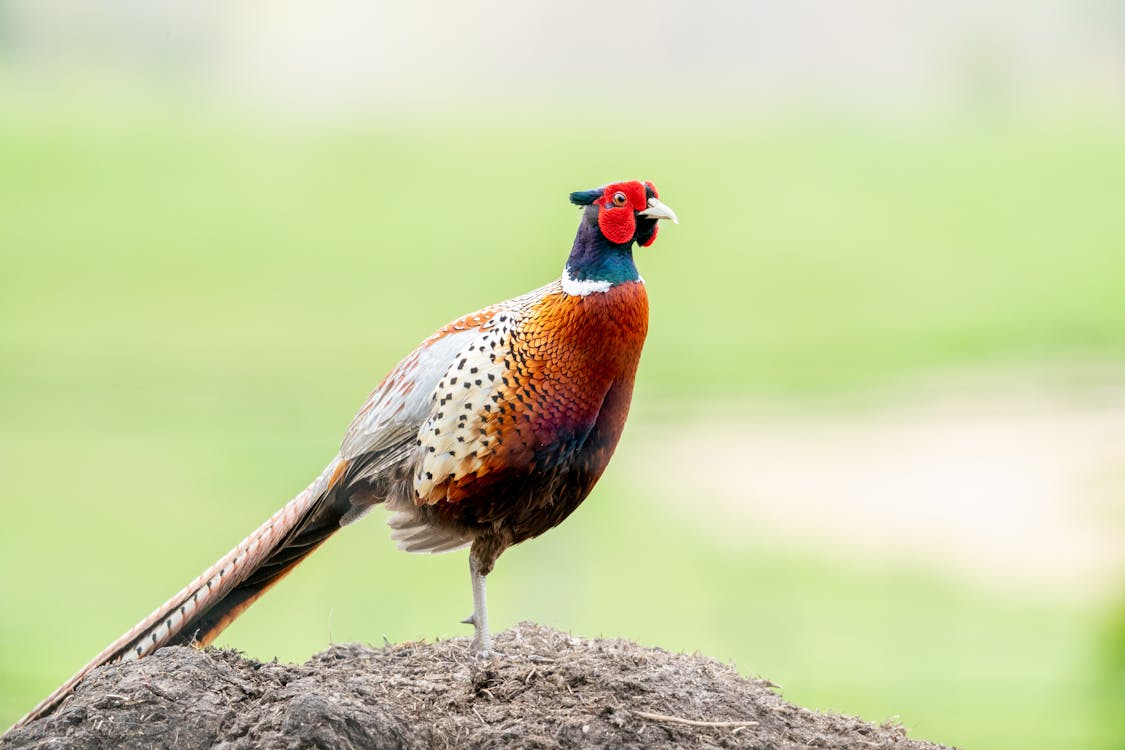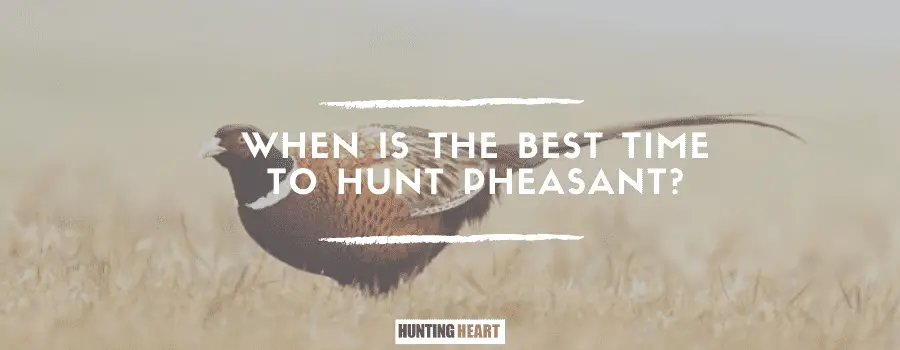As an Amazon Associate I earn from qualifying purchases.
Our Associate portal can be found here
Hunting beautiful upland birds allows you to get outside and socialize with other hunters. It’s also a lot of fun and a viable opportunity to exercise. Above all, nothing beats the adrenaline rush of a good chase. Which raises the question: What is the best time to hunt pheasant?
The best time to hunt pheasant is early in the morning and late in the evening. . If you are hunting at a private club, you can go after these game birds anytime during the day.
No one ever forgets their first. Mine was a large bird with a rounded body and long tail. In this post, I share what I’ve gathered over the years about the best time to go after this game bird. But first, for the sake of beginners, here are a few basic facts you should know about pheasants.
Tips For Hunting Pheasant
These birds of Asian origin were first introduced into the United States in the 80s. The first state-sanctioned pheasant season occurred in 1857. Since then, they have been introduced into 40 different states. South Dakota has even designated the ring-necked pheasant as its state bird.
They can be found in the wild, but most are raised on farms and released for sport by government agencies, clubs, and individuals.
Stalking these birds may seem like an uncanny game of ‘Tag’ where you are always ‘It.’ To put roosters in range, you must first understand how to find them and when to hunt. You must also be patient and maintain stealth. Here are a few insightful tips.
See our full guide on Pheasant Hunting | Beginner’s Guide
What is the Best Time to Hunt pheasant?
The best time to hunt pheasant is during the morning and twilight hours when the birds are looking for food in lighter cover and are easier to spot. Hunting with a dog increases your chances of success since their sense of smell is heightened in cold and misty conditions. But I’ve had great success just a few hours to dusk.
A different approach applies if you’re hunting in a private club. Here, you can hunt pheasants all day. The birds are released a few minutes before the hunt begins at the convenience of the hunters.
Keep an eye on the weather. Dogs can detect pheasants better in cold, moist environments. It is also easier to spot their tracks in mud and snow.
Best Place to Find Pheasant
Pheasants roost in thick, grassy cover and travel between fields for food. If you walk blindly into pheasant territory, you may find yourself roaming the vast expanse of grass and grain with no success. Neither does it do you any good endlessly stomping through a slough when the fowl is tucked along the fenceline.
If you are hunting without a dog, you must know where to look to better your chances. Their preferred habitat includes:
- Grasslands
- Marshland
- Vast fields of crops like corn.
- Along fence lines, creeks, shelterbelts, and ditches.
Basic Pheasant Hunting Gear
Guns and Ammo
Typically, any gauge shotgun used for duck and goose hunting will work just fine. Preferences, on the other hand, differ from person to person. Some hunters prefer 16-gauge to 20-gauge shotguns, while others prefer the popular 12-gauge shotgun. Sources suggest that pump-action shotguns are best for beginners. More seasoned hunters can go for semi-autos.
Ammunition for this firearm is readily available for multiple body types and is less expensive than other gauges. The bore can handle a wide range of loads and has enough power to take down tough roosters. A number 5 lead shot is recommended. They are light and portable, making them ideal for use in the field.
Clothing
Wear brush pants (or fairly thick work pants) and a long sleeve shooting shirt under a jacket or vest to avoid scratches because you’ll most likely be moving through thick cover. Consider full-body underwear made of performance materials that can be worn in various weather conditions.
If you’re going hunting in the United States, find out if you need to wear a blaze orange vest, hat, or cap. Camouflage isn’t necessary.
And because most pheasant hunting seasons occur during cold spells accompanied by sporadic rain or snowfall, invest in quality waterproof boots and rain gear. This is because scenting conditions for dogs are amplified by wet conditions, and mud also makes it easier to track pheasants.
Check out our article on Our Favorite Gear
Laws and Regulations
Depending on where you hunt, make sure you know pheasant hunting laws. You must observe a variety of rules and regulations, as well as licensing requirements. Local wildlife agencies’ websites are an excellent resource. You can also ask guides who organize hunting tours for more information.
Be prepared to encounter rules such as:
- A minimum age limit.
- Wearing an orange-colored outfit.
- Observing load and firearms regulations.
- Tagging and recording all kills.
- You may be required to take some lessons before going to the field.
Choosing a Bird Dog
Pheasants prefer to run rather than fly, but when they flush, it’s a sight to behold! You may be able to knock the birds down without a four-legged companion, but finding the downed bird is more challenging without a dog.

Americans prefer long-distance pointers and setters, while Europeans prefer close-working flushers like spaniels. Retrievers help collect the harvested birds.
Some recommended bird dog breeds include:
- Labrador retriever
- Golden retriever
- German wirehaired pointer (Deutsch drahthaar)
- German shorthaired pointer
- English cocker spaniel
- Wirehaired pointing griffon
- Brittany
In Summary
Like most birds, the best time to hunt pheasants is early in the morning and late evening. You must also make special considerations on the location, time of day, and general weather conditions. Ensure you apply and pay for all required licenses and permits, and observe daily bag limits, firearm and load restrictions. Hunting pheasants is exciting and addictive. And if you’re just starting out, you’re in for a fantastic experience.
Amazon and the Amazon logo are trademarks of Amazon.com, Inc, or its affiliates.

36 years old, been hunting and fishing my entire life – love the outdoors, family, and all kinds of hunting and fishing! I have spent thousands of hours hunting hogs and training hunting dogs, but I’m always learning new stuff and really happy to be sharing them with you! hit me up with an email in the contact form if you have any questions.


